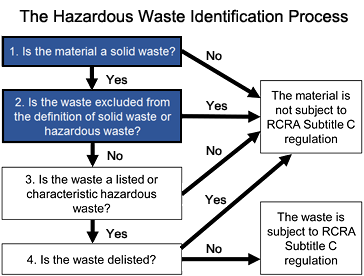A Biased View of Reclaim Waste
A Biased View of Reclaim Waste
Blog Article
Our Reclaim Waste Statements
Table of ContentsAn Unbiased View of Reclaim WasteReclaim Waste Things To Know Before You Get ThisThe 3-Minute Rule for Reclaim WasteNot known Factual Statements About Reclaim Waste The 6-Minute Rule for Reclaim Waste
Check out the kinds, events, and forms of liquid waste. Domestic sewer waste refers to the waste and items from a household sewage-disposal tank. This kind of waste is produced by people in houses, institutions, and various other buildings. This only consists of septic systems that have a drainpipe field. The proper management and disposal of residential sewage waste call for liquid waste to be transferred to a sewer treatment plant where the correct approaches and devices are put on cleanse and throw away waste.
Industrial waste usually consists of potential risks, such as combustible materials or a mixture of liquid and strong waste products, and needs an advanced and in-depth disposal procedure. The disposal of commercial waste commonly involves the filtering of waste prior to transportation to make sure secure and correct disposal. Hazardous waste is developed from by-products and overflow of commercial procedures and production.
This type of waste can not make use of the very same sewage administration transport or procedures as septic or commercial liquids. The industrial waste management procedure calls for the evaluation and testing of fluid waste prior to it undertakes the disposal procedure (liquid waste removal). Overflow waste is the liquid waste that originates from runoff and excess stormwater in very booming areas or cities
Runoff waste can cause contamination and flooding if not taken care of properly. Ensuring correct waste administration can protect against catastrophes and decrease ecological harm.
The Reclaim Waste Ideas
Get in touch with PROS Providers today to discover our waste administration and disposal solutions and the proper methods to look after the liquid waste you produce.
(https://reclaimwaste1.mystrikingly.com/blog/efficient-liquid-waste-disposal-in-melbourne-why-reclaim-waste-is-your-go-to)This so-called 'wastewater' is not only a vital source but, after treatment, will be released to our land, waterways or the sea. Utilized water from toilets, showers, bathrooms, kitchen sinks, washings and industrial processes is recognized as wastewater.

water utilized to cool down machinery or tidy plant and tools). Stormwater, a type of wastewater, is runoff that streams from farming and urban locations such as roofs, parks, gardens, roads, paths and rain gutters right into stormwater drains, after rain. Stormwater streams without treatment directly to neighborhood creeks or rivers, eventually getting to the ocean.
The Best Strategy To Use For Reclaim Waste
In Queensland, the majority of wastewater is dealt with at sewer therapy plants. Wastewater is delivered from residential or commercial websites with a system of drains and pump terminals, known as sewage reticulation, to a sewage treatment plant. City governments construct, maintain and run most sewer therapy plants. Operators are licensed under the Environmental Protection Act 1994 to discharge cured wastewater at an appropriate ecological criterion into waterways.
The Department of Natural Resources recommends city governments concerning handling, operating and preserving sewerage systems and therapy plants. In unsewered locations, regional governments might need owners to mount private or household sewer therapy systems to deal with domestic wastewater from toilets, kitchens, restrooms and washings. The Division of Natural Resources authorises making use of family systems when they are my explanation shown to be efficient.
In some new subdivisions, therapy of some stormwater to remove clutter, sand and gravel has actually started using gross contaminant catches. Wastewater therapy occurs in four phases: Eliminates solid matter.
Wastewater after that streams into big containers where solids work out and are gotten rid of as sludge. Grease and residue are skimmed from the surface area. Makes use of tiny living organisms referred to as micro-organisms to break down and get rid of remaining liquified wastes and fine bits. Micro-organisms and wastes are included in the sludge. Removes nitrogen and phosphorus nutrients that might create algal blooms in our waterways and intimidate marine life.
Rumored Buzz on Reclaim Waste
Nutrient elimination is not available in any way sewer therapy plants due to the fact that it needs costly specialist devices. It is ending up being a lot more usual in Queensland. Clear fluid effluent produced after treatment may still include disease-causing micro-organisms. If this effluent is launched right into rivers such as rivers or the sea, the micro-organisms will ultimately die out.

The majority of wastewater streams right into the sewerage system. Under the Act, local federal governments administer authorizations and licences for eco appropriate tasks (ERAs) entailing wastewater releases that may have a neighborhood effect.
Reclaim Waste Things To Know Before You Buy
Otherwise, examples are considered laboratory analysis. Often lots of tests are required to develop the degrees of each of the different contaminants such as oils, hefty steels and pesticides in water. Monitoring supplies valid details concerning water quality and can verify that permit problems are being fulfilled. The details gotten via surveillance provides the basis for making water quality decisions.
Report this page